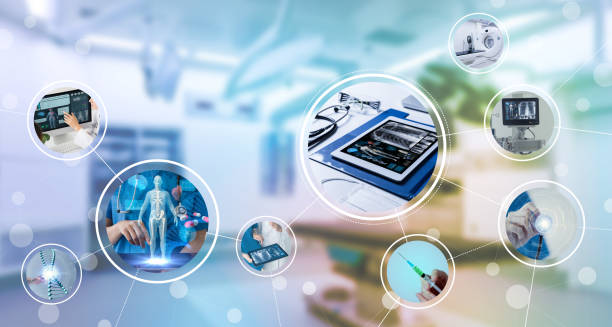
Discover the Secrets to Implementing Remote Patient Monitoring in Hospitals
Posted by on 2024-07-04
In today's fast-paced world, technology has revolutionized the way we approach healthcare. One such innovation is remote patient monitoring, a valuable tool that allows healthcare providers to track and manage patients' vital signs and symptoms from a distance. This technology has proven to be especially beneficial in hospitals, where the need for efficient and accurate patient care is paramount.
Implementing remote patient monitoring in hospitals can seem like a daunting task, but with the right knowledge and resources, it can be a game-changer for both patients and healthcare providers. By discovering the secrets to successfully implementing this technology, hospitals can streamline their workflows, improve patient outcomes, and ultimately save lives.
One of the key secrets to implementing remote patient monitoring in hospitals is having a solid understanding of the technology itself. Healthcare providers must familiarize themselves with how remote monitoring devices work, what data they collect, and how that data can be utilized to inform treatment decisions. Training staff members on how to use these devices effectively is also crucial in ensuring successful implementation.
Another secret to success is establishing clear communication channels between patients, caregivers, and healthcare providers. Patients must feel comfortable using remote monitoring devices and understand their role in reporting data accurately. Healthcare providers must also be able to interpret this data quickly and effectively communicate any necessary interventions or changes in treatment plans.
Furthermore, integrating remote patient monitoring into existing hospital systems is essential for seamless implementation. This may require investing in new software or hardware solutions that can securely transmit data from monitoring devices to electronic health records. It's important that these systems are user-friendly and compliant with privacy regulations to maintain patient confidentiality.
Lastly, ongoing evaluation and optimization of remote patient monitoring protocols are critical for long-term success. Hospitals should regularly assess the effectiveness of their programs, gather feedback from patients and staff members, and make adjustments as needed to ensure optimal outcomes.
By uncovering these secrets and taking proactive steps towards implementing remote patient monitoring in hospitals, healthcare providers can enhance the quality of care they deliver while improving efficiency and reducing costs. Ultimately, embracing this innovative technology will empower hospitals to better serve their patients and stay ahead in an ever-evolving healthcare landscape.
Implementing remote patient monitoring in hospitals can seem like a daunting task, but with the right knowledge and resources, it can be a game-changer for both patients and healthcare providers. By discovering the secrets to successfully implementing this technology, hospitals can streamline their workflows, improve patient outcomes, and ultimately save lives.
One of the key secrets to implementing remote patient monitoring in hospitals is having a solid understanding of the technology itself. Healthcare providers must familiarize themselves with how remote monitoring devices work, what data they collect, and how that data can be utilized to inform treatment decisions. Training staff members on how to use these devices effectively is also crucial in ensuring successful implementation.
Another secret to success is establishing clear communication channels between patients, caregivers, and healthcare providers. Patients must feel comfortable using remote monitoring devices and understand their role in reporting data accurately. Healthcare providers must also be able to interpret this data quickly and effectively communicate any necessary interventions or changes in treatment plans.
Furthermore, integrating remote patient monitoring into existing hospital systems is essential for seamless implementation. This may require investing in new software or hardware solutions that can securely transmit data from monitoring devices to electronic health records. It's important that these systems are user-friendly and compliant with privacy regulations to maintain patient confidentiality.
Lastly, ongoing evaluation and optimization of remote patient monitoring protocols are critical for long-term success. Hospitals should regularly assess the effectiveness of their programs, gather feedback from patients and staff members, and make adjustments as needed to ensure optimal outcomes.
By uncovering these secrets and taking proactive steps towards implementing remote patient monitoring in hospitals, healthcare providers can enhance the quality of care they deliver while improving efficiency and reducing costs. Ultimately, embracing this innovative technology will empower hospitals to better serve their patients and stay ahead in an ever-evolving healthcare landscape.